- Home
- James Grady
Six Days of the Condor Page 2
Six Days of the Condor Read online
Page 2
After the convention, spring of 1972, I disappeared on the road for a few months of driving around the country, survived the trip, came back to Helena, Montana, and after a brief foray as a laborer/fire hydrant inspector, took a job targeting juvenile delinquency in an octopus of a state agency backed by federal funds. I needed a day job that required me mostly to use my mind and hands, because my heart and soul belonged to my dreams.
I’d decided that the only way to learn how to write a novel … was to write a novel.
And that the only way to be a writer … was to write.
Seldom has a novice been so unprepared for the consequences he catalyzed.
But the rage to write burned in me like a heroin addiction welded to sex.
I lived in a small, second-story apartment above a sweet cottage not far from the state capital building in Helena. For a while, my roommate was one of America’s smartest Baby Boomers, a longtime friend named Rick Applegate. Often, I stole my fictional characters’ names from the spines of Rick’s nonfiction books. My neighbors were a beautiful, nice, so cool couple: he was an affable, whip-smart lawyer, she was that tawny-haired, artsy woman so many of us sixties soldiers wanted to be or wed. I lived in that apartment long enough to meet their first born, a baby girl named Maile Meloy who went on to become one of the major American novelists/short story authors/essayists of her generation, but I moved out of town before they brought home their second child, a son, Colin Meloy, leader and chief writer for the famous twenty-first-century indie folk rock band The Decemberists. I labored within a classic American bureaucracy by day, jogged and studied judo at the YMCA, saw my girlfriend when I could, was a bumbling godfather to my cousin’s newborn son, soared in AM radio and record player rock ’n’ roll, went to movies, saved my pennies, and spent the rest of my time drifting in surreal worlds or at the kitchen table hunkered over a forty-pound, high school surplus, green Royal manual typewriter.
And felt two what-if questions from my Washington, D.C., days come to life.
In those days, James Bond, super spy, dominated espionage fiction. Despite fine movies having been made from their excellent books, masters John le Carré (The Spy Who Came in from the Cold) and Len Deighton (The Ipcress File) were overshadowed by 007. Eric Ambler, Joseph Conrad, and Graham Greene could be found on library shelves, but at bookstores they were blanked out by the glitz of Dr. No, Goldfinger, and From Russia With Love (the best Bonds)—Sean Connery and Ursula Andress, sex and a Walther PPK.
As much as I love “Bond, James Bond,” I didn’t want to write about a superhero. A superhero always triumphs—is immune to paranoia, is never in ultimate jeopardy.
And was someone I’d never met. Trained—or perhaps tainted—as a journalist, I wanted to keep one hand on facts while my other shaped fiction. So I knew that whoever my hero was in that novel of what-ifs that ambushed me on a Washington street, he was no superman.
But he did work for the CIA.
The Central Intelligence Agency, America’s best-known spy shop. In that fearful post-Joe McCarthy era, when assassinated JFK had publicly loved James Bond and secretly been entangled in covert intrigues like assassination plots against Cuba’s Fidel Castro outsourced to the Mafia by our spies, the CIA was a myth-shrouded invisible army. In those pre-Internet days before electronic books, Web sites with varied credibility, and search engines—before Vietnam war protests and Watergate helped expose espionage scandals—the average bookstore and library carried … zero books about the Agency.
When I researched Condor, I found only three credible books on the CIA, two by David Wise and Thomas B. Ross (The Invisible Government and The Espionage Establishment) and one by Andrew Tully (CIA: The Inside Story). I stumbled across a book by historian Alfred W. McCoy, who braved the wrath of the U.S. government, French intelligence agencies, the Mafia, the Union Corse (the major French criminal syndicate), the Chinese Triads, and our exiled Kuomitang Chinese allies to write The Politics of Heroin in Southeast Asia, an analytic history of the twentieth century whose depth, accuracy, and brilliance deserved (but did not receive) a Pulitzer Prize. McCoy tramped the mountains of Laos, air-conditioned government corridors of Saigon (now Ho Chi Minh City), and along the klongs of Bangkok to show how, in our crusade against communism, America’s government had at the least embraced ignorance about the gangsterism of those who called themselves our friends and allies.
Those works—plus a few columns by my future muckraking boss Jack Anderson and cryptic conversations with friends who’d come back from the Vietnam war having “seen some things”—constituted the only reporting I did on the CIA.
My imagination was thus luckily unencumbered by much reality.
Fiction in that era treated the CIA like a ghost, a giant presence authors tiptoed around and barely touched. CIA agents made appearances in hundreds of novels, but they were usually somber creatures of unquestioned monomania and solid competence. What and how and why they did what they did went unexamined.
Four notable exceptions were Richard Condon, whose The Manchurian Candidate military intelligence nightmare blew me away in adolescence as both a novel and a movie; the noir and cynicism-drenched novel by Noel Behn and its John Huston-directed movie The Kremlin Letter (which focused on “off the books” spy groups, not the CIA); Charles McCarry, who, until I graduated from high school in 1967, worked as a deep cover CIA operative and whose novels started coming out as I was writing Condor (novels I didn’t see then); and another CIA agent named Victor Marchetti, who in post-Condor 1974 co-authored The CIA and the Cult of Intelligence, a classic exposé that a First Amendment-loving U.S. Supreme Court censored on a word-by-word basis. In a 1971 novel called The Rope Dancer (that I read only after writing Condor), Marchetti followed a then-frequent but today absurd-sounding practice: he changed the name of the CIA to the NIA, further distancing fiction from reality.
Hollywood treated the CIA with an awestruck touch: on movie and TV screens, the CIA meant impossible mission gadgets and trenchcoated knights in righteous pursuit of a Holy Grail. An engrossing exception that few people, including me, saw at the box office was the 1972 movie Scorpio, starring Burt Lancaster as a CIA executive who may or may not deserve the French assassin the Agency forces to hunt him. Ironically, Scorpio’s cast sometimes stayed at the same hotel and crossed paths with the team of Nixon “plumbers” who were surveilling the Watergate complex across the street for their soon-to-be world’s-most-famous burglary. Two great movies of the era’s paranoia—The Parallax View and The Killer Elite—did not come out until after I’d long finished my novel. I was a fan of the TV show I Spy from my high school days, starring Bill Cosby and Robert Culp, but TV in the sixties was broadcast in the shackles of rigorous, censorious standards, and those two American agents too often came off like super spies.
Of course there was Alfred Hitchcock, the master of cinematic suspense. His great movies often unfolded in worlds of espionage and international intrigue—most notably North by Northwest. But for Hitchcock, spies were merely agents of the great term he created: the MacGuffin—that thing or force that throws characters together and provides the motivation that drives the story, the “what it’s about” for suspense and action.
Of all the creative lessons I absorbed from Hitchcock, perhaps his most important influence on me was that the best suspense stories are believably personal: real people hit with life or death choices, whether generated by strangers they met on a train or geo-political covert wars fought beyond the characters’ ordinary lives. Hitchcock’s often regular, or even bland, characters, once triggered into action, battled to save their lives, to reclaim control that had been destroyed by the story’s MacGuffin.
Such was the cradle of Condor.
Many of my credited revelations about the CIA came from Wise and Ross. They’d stressed how much the agency depended on analysts sifting often mostly public records, so I pushed that concept.
I invented a job I’d love (if I couldn’t be a writer): reading novels for
espionage tidbits—including Nero Wolfe mysteries by Rex Stout (a favorite of mine).
Wise and Ross provided a skeletal outline of the CIA’s structure.
After my experiences in the U.S. Senate, plus working on Montana civic road crews and in the octopus, state-run, federally funded small office, I decided that even a secret national security agency like the CIA was still a government bureaucracy powered by the same forces and foibles I witnessed every day.
So, I thought, knowing all that, how would I organize the CIA?
And I projected the answers to my questions in my fiction, including creating such (to me) obvious things as a panic line for agents in trouble, an entity that I proved to be true in my future muckraking days with Jack Anderson.
Because I definitely knew that, whatever my plot was, my hero had to panic and had to be the kind of guy who needed all the help he could get. My image of him meant he could only do things that an ordinary guy could do. He could be clever, but not magically super-competent, and most of his training would come from the kind of fiction in which he was being created. I chose his name to reflect what American slang refers to as a “nerd.” No cool-monikered Hemingway Nick or Hawaii Five-O Steve for my guy: he became Ronald Malcolm, a name perfect for playground mockery. Like me, somehow even his friends called him by his last name.
I came at my first novel like a journalist, reporting the what-if questions in the lean, sparse, straight-ahead prose in which I’d been schooled. Nights and weekends for four months, I sat in that yellow kitchen nook in Helena, Montana, and let my imagination command my fingertips on that battered green Royal manual typewriter. I had no idea what I was going to call the book until I’d finished it and realized I had a straight line chronology that, with a slight re-organization, fit into six days: our culture had already absorbed a week of a thriller with Seven Days in May. I’d spent a Saturday afternoon coming up with Malcolm’s codename, settling on “condor” because it connoted death and sounded much cooler than “vulture.”
I’d never considered writing Condor as just a learning exercise. Of course, I was an aging twenty-three-year-old nobody living thousands of literal and cultural miles from the publishing world of New York. I had not a single connection, no one to advise me, make a phone, or write a letter or knock on a door in my behalf.
Such absolute isolation gave me a so what attitude that inspired hustle.
I went to the local library, roamed the stacks to find which publishers published any kind of fiction remotely resembling the rough draft manuscript sitting in my garret. In late 1972, I came up with close to thirty firms that published at least some fiction. I used my work’s “high tech” IBM Selectric typewriter and Xerox machine, crafted a synopsis that did not reveal the novel’s ending, a sample chapter, and a biography that, while true, hinted at mystery. One day I dropped thirty packets of hope in the U.S. mail, then went back to ordinary life that included abusing my job’s facilities to type the final manuscript of Condor. Of the thirty publishers, half responded in my pitch packet’s self-addressed, stamped envelopes; of that half, six said yes. I picked one at random, sent the then-finished manuscript off.
Four months later, still having heard nothing, I was about to leave my job in Helena for a starving-author’s life in Missoula, then a more cosmopolitan Montana city. But I’d still heard nothing, so I called publisher number one, got through to the editor, who politely told me they were rejecting my novel. I waited a few days until I had my new apartment and phone number in Missoula, then dropped the manuscript in the mail to W.W. Norton, and moved.
My parents and some of my friends were terrified: nobody we knew made a living writing fiction. I didn’t care. In 1973, I was twenty-four, living in a shack in Missoula’s blue-collar section of town, subsisting off my savings, hustling less than a month’s rent worth of freelance journalism, spending only what I had to (I rationed the Cokes I drank to the nights my karate club practiced), excitedly pounding out fiction on that old green manual typewriter, including one twelve-plus-hour marathon session that ended only when my typing fingers began to bleed—call that chapter of my life Blood on the Keys.
That period’s output included a classically overly self-conscious novel in the college-awakening genre that hopefully no one else will ever read, and one subsequently published comic caper novel called The Great Pebble Affair, released under a pseudonym in the U.S. to mildly approving reviews. In Italy, Pebble was published under my name and stayed in print for years. In 2000, Wu Ming—an Italian collective of authors—told me it was one of their inspirations.
In the real world, my bank account was dwindling and the news increasingly focused on scandals smelling of crime and intrigue coming out of the Nixon White House. Washington, D.C., sounded much more exciting than starvation row. My former boss, Senator Metcalf, had a year-long fellowship open to Montana applicants who were journalists—a stretch for me, but the Missoula paper had published one of my freelance articles and the national magazine Sport was about to run my hustled three-paragraph story about a weird gopher-racing civic promotion stunt back in my hometown of Shelby. I applied for that fellowship, started thinking about road crew jobs or white collar bureaucracy work that wouldn’t sap my creativity for my real work.
When the phone rang.
The man on the call introduced himself as Starling Lawrence, an eventual novelist but then an editor at W.W. Norton, who said the house wanted to publish Condor, and it would pay me $1,000—more than ten percent of the annual yearly salary I’d been making working as a white-collar warrior. Of course I said yes, and he said: “We think we can sell it as a movie, too.”
Doesn’t he know that kind of thing only happens in movies? I thought, but said nothing and refrained from laughing. He was going to publish my novel; no way would I say a discouraging word.
Two weeks later, as I stood in my empty bathtub, trying to use duct tape to rig a shower out of some discarded plumbing parts, again the phone rang.
Starling Lawrence and a pack of Norton staffers were on the line, telling me that famed movie producer Dino De Laurentiis had read Condor in manuscript form and quickly (Dino later told me after the first four pages) decided to make it a movie. He bought the book outright, and my share of the sale would be $81,000.
I stood there, still holding the spool of gray duct tape, listened while Starling excitedly rehashed what he’d told me, then I said: “You’ll have to excuse me, I need to go back to duct taping my shower and I haven’t heard a word you’ve said after $81,000.”
I could subsist writing fiction for years on that!
A week later, Senator Metcalf awarded me the fellowship to come back to Washington and work on his staff.
I was twenty-four years old.
And I drove off into tomorrows of adventure I couldn’t have imagined.
Most of you reading this have some knowledge of the Condor story from the movie, so let me risk being a spoiler to reveal more of the Condor saga.
Every novel is two books: the manuscript the author writes, and the product that publishers, editors, and the author carve out for readers. In the process of creating that second book, the author is both beef and butcher.
My manuscript Condor character is as he’s become in legend, but the novel first published in 1974 is not quite the story I first created.
The manuscript is a noir spy story, which propels Condor through my what-ifs with a plot about a small group of corrupt CIA operatives and executives who turn rogue and create their own heroin smuggling operation out of the murky chaos of the Vietnam War that defined my generation. That MacGuffin races Condor through his six days of life-changing peril, during which the woman he dragoons into being his lover and co-target (think Faye Dunaway) is killed by the assassin, an act that transforms Condor from victim and prey to hunter and killer.
A prologue and epilogue set in Vietnam bookend the D.C. spy-slaughtering saga. The manuscript also set the story in rock ’n’ roll, from a classic “Just My Imaginatio
n” radio moment as we meet Condor aching in girl-watching to the brutal climax when—call it assassination or call it justice—Condor loses his innocence in the men’s room at the Washington airport while the piped-in lavatory music plays four quoted lines from the Beatles great song, “With a Little Help from My Friends.”
Those Beatles lines were the first to go when I was informed that what I saw as literary journalism, the rights holders saw as a necessary fee—a small fee that would have decimated my advance for the book. I was too nervous about my economic future to risk that in-hindsight paltry sum. Having the Temptations playing on the radio when Condor steals time from his work to sit at the window and watch for a certain unknown beautiful girl to walk by then seemed too obviously ironic. While the girl stayed—how often had I sat at that window?—the radio and song got red-lined.
But I was proud of how little editing the book seemed to need or get from Starling and the hardback publisher, though he did have me drop the Vietnam prologue and epilogue.
Then, after the movie sale had moved to movie-in-production, the paperback publisher—or rather, someone at a meeting in the paperback publisher’s firm—asked Norton if I would make two small changes.
First, change heroin into something else: “Could it be some kind of super-drug?” With the movie The French Connection having been a hit, “The feeling is, heroin’s been done.”
Second, let the Faye Dunaway heroine live: “Killing her is so dark.”
These paperback suggestions came to me over the phone in the suburban Washington apartment where I stayed briefly in January 1974 with Montana friends until I could get my own place in the city. What I didn’t realize was that I might have a choice in the matter: As a journalist, I’d been schooled to believe the editor’s word was law and that if you fought the editor, you lost and your story often died unread.
Losing the rock ’n’ roll made me sad, but seldom was it seen that much in novels then anyway. Dropping the epilogue and prologue in favor of faster, more immediate plot development made a lot of sense.

 The Short Takes
The Short Takes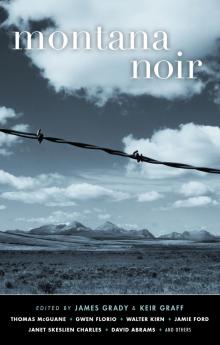 Montana Noir
Montana Noir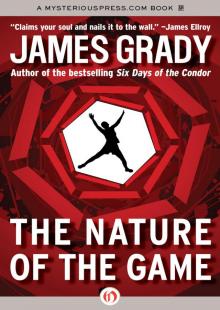 Nature of the Game
Nature of the Game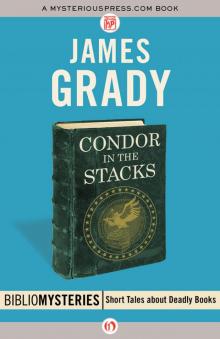 Condor in the Stacks
Condor in the Stacks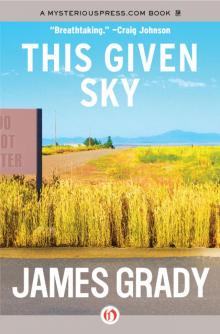 This Given Sky
This Given Sky Three Days of the Condor
Three Days of the Condor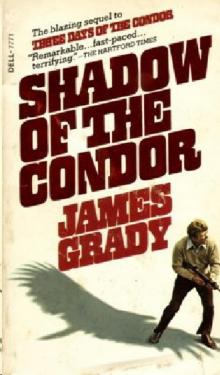 Shadow of the Condor
Shadow of the Condor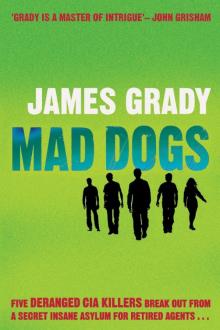 Mad Dogs
Mad Dogs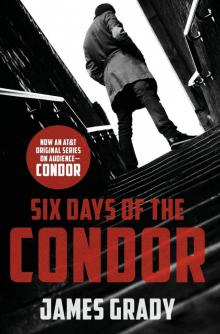 Six Days of the Condor
Six Days of the Condor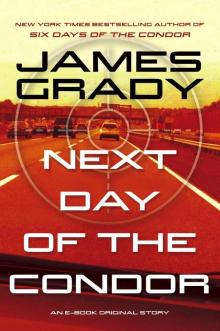 Next Day of the Condor
Next Day of the Condor